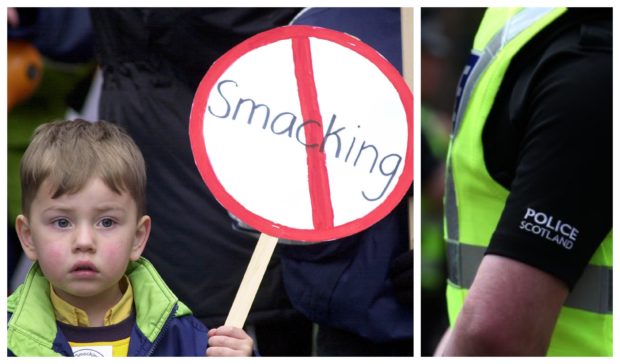We are edging closer to a ban on parents smacking their children in a move which is backed by the Scottish Government.
However, a poll claimed more than 50% of the public are against a ban.
I don’t believe this suggests we are nation of brutal child beaters, but says more about parental rights.
The Scottish Government has “previous” over this kind of thing: the shambolic and ill-conceived Named Person legislation to protect children was likened to a “totalitarian state” by the highest court in the UK.
No wonder parents’ groups are nervous.
I can see how Scotland’s establishment feels out of step on the politically-correct merry-go-round compared to other countries. This is because we allow a defence of “justifiable assault” in Scotland for parents taken to court over smacking.
We are told that removing this defence sends out a powerful message that smacking is bad. Don’t most of us know that already? I cannot remember the last time I saw a child being smacked in public, can you?
I have not seen any research which suggests it is a massive problem. I found a Scottish Government document which estimated (because there were no actual figures) that “justifiable chastisement” might only be used in court once a year on average – so what’s the fuss, you might say?
The same document revealed that some people behind the legal change were calling for a £500,000 “no smacking” PR campaign. Sensibly, the Scottish Government was lukewarm on cost grounds.
As with Named Person nonsense, a real fear is that over-zealous jobsworths will start meddling, followed by an upsurge in smacking prosecutions.
You would hope that common sense by police, social workers and prosecutors, and the existing approach for dealing with assault, would suffice.
How do you define smacking anyway? Different grades of “slap” might need to be applied. What about a strong two-finger tap on the shoulder or a scruff-of-the-neck grab to shake some sense into a misbehaving child? Have we considered the stabbing finger prod to the chest or arm? Very effective, indeed, but now rendered illegal? Twisting ears used to be quite handy, too. Threatening to assault someone is an offence, so technically the same could apply to threatening to smack.
It might sound straightforward in theory, but bringing smacking cases to court is more complex than it looks.
The real intention is probably nothing more than simply removing an outdated and inappropriate legal defence – in this day and age – and raising public awareness, but without a surge in prosecutions.
Strong emotions and suspicions remain, however.
A lot has been said about this – even God was dragged into it last week.
A clergyman told a Holyrood committee that God would support a smacking ban. Fair point, but you don’t require specialist ecclesiastical knowledge or a direct line “above” to work that out.
I would be more interested in God’s views on some of those who have acted in his name down the centuries. He must hold his head in his hands.
Religious intolerance, bigotry and persecution has been rife. In modern times, same-sex marriage has split the Church. And, in the context of this article, appalling physical and sexual violence against children has thrived in some supposedly religious institutions.
I was leafing through some pages the other day and read a series of blood-chilling disciplinary recommendations for keeping children in line.
Don’t spare the rod was the underlying theme. Chopping off hands and stoning to death were other options for juvenile troublemakers.
What was I reading? Game of Thrones?
No, the Bible.
The Book of Proverbs was full of it. Did they get that from God, one ponders?
Thankfully, ancient ideas about child punishment are not interpreted literally these days. Parental discipline does recur frequently, however, in scriptures relating to a fulfilling life. Parents have a lot to answer for in this respect.
Most teachers are not allowed to say even “boo” to a pupil anymore and classroom discipline has disappeared in some places. The home environment has a lot to do with lack of respect and even bullying at school.
My old maths teacher had an answer to this problem: he simply disappeared into his stockroom and emerged with a pile of text books, which he proceeded to throw at us. They bounced off ceilings, desks and bodies. It just seemed normal at the time, but it instilled respect for the power of fear.
Parental smacking literally in the wrong hands is a short step away from child abuse. For decent parents any smacking incidents usually occur in the midst of panic, anger or exasperation – and are followed by instant remorse.
This law change actively encourages parents who might smack to consider alternative methods of punishment. Unfortunately, there is something far worse than an occasional smack.
Emotional and psychological abuse of children on a daily basis behind closed doors is seriously damaging. It leaves mental scars which last for life while destroying self-esteem and confidence.
Smacking is a serious issue, but tinkering with the law over this only scratches superficially at the surface of a deeper and darker crisis of chronic child abuse all around us.
David Knight is the long-serving former deputy editor of the Press and Journal











